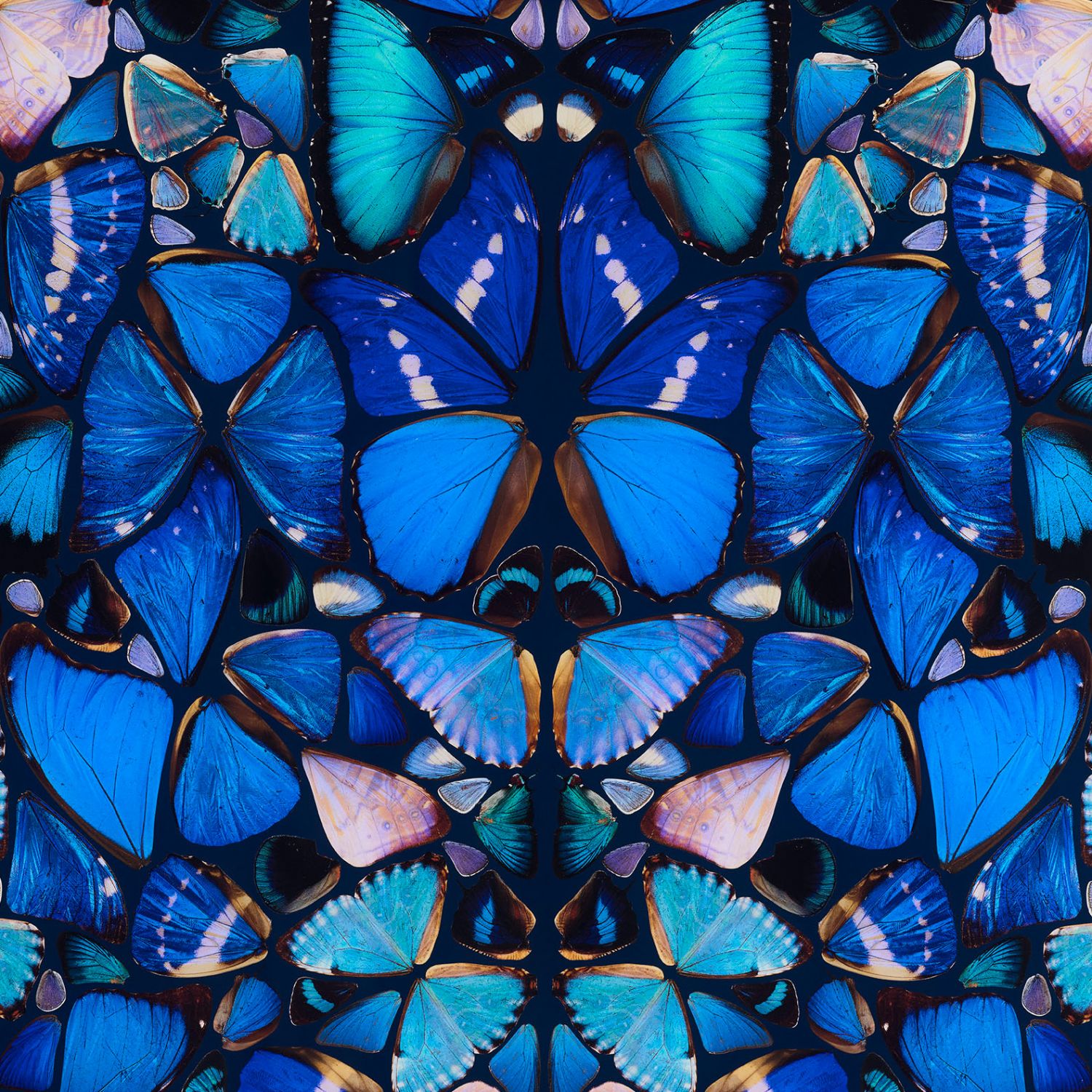
Young British Artists – the dead and yet alive Butterflies of Damien Hirst
ArtWizard 07.07.2021
Damien Hirst's unique approach to his art lies in the concept that art is a reflection of life. His use of the butterfly speaks to this concept, as the butterfly symbolizes the circle of life, growth, and change. Each butterfly is also born with a completely unique pattern, mimicking the individuality of each human. For Damien Hirst, butterflies symbolize death and resurrection. The British artist debuted this motif when he was 26 years old, with his ambitious installation “In and Out of Love” (1991).

Damien Hirst, In and Out of Love, 1991
“In and Out of Love” was Hirst's first solo exhibition in London. In 1991, in a particularly humid room in Soho, he hung large white canvasses on which were glued butterfly pupae, ready to hatch. Emerging butterflies flew around the room, feeding on sugar water, rotting fruit and flowers, mating and laying eggs for the next cycle of life.

Damien Hirst, Violet Butterfly, 2008
In Victorian times, butterfly collecting was a mainstream pursuit. Local people would rent their homes to enthusiastic collectors who would descend on butterfly hotspots – as if they were Wimbledon or the Olympics – during the flight season. Small boys would catch rarities and sell them to gentleman collectors for princely sums. Collecting was regarded as the perfect hobby for clergy – not as brutal as fox-hunting but still allowing for plentiful fresh air – and Victorian drawing rooms were brightened with mahogany drawers stuffed with rows of pinned, dead butterflies. Hirst's other butterfly art on display in the Tate, paintings that feature great collages of real butterfly wings, is more directly inspired by this rich heritage.
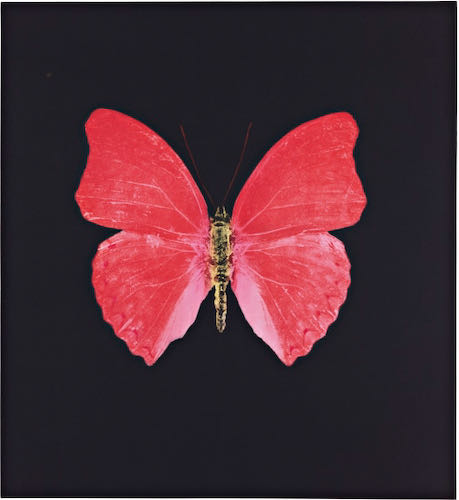
Damien Hirst, Red Butterfly, 2008
Dead butterflies may look macabre when two-thirds of Britain's 59 butterfly species are in decline. Collecting butterflies is frowned upon today and it is illegal to catch the rarer species, but the collectors discovered much about ecology and their hoards are still scientifically useful. They may be scarcer in our countryside but butterflies exert a greater influence than ever on aesthetics and design. Hirst is certainly not the first artist to be inspired by the brilliant iridescent blue scales on butterflie’s wings.
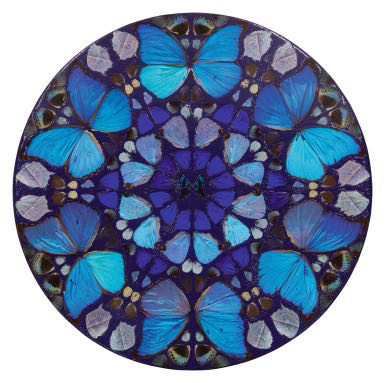
Damien Hirst, Psalm 148, 2008
There has been a long line of artists from the ancient Egyptians to Renaissance painters and Salvador Dalí in depicting these insects. Butterflies have become ubiquitous emblems on greetings cards and high-street fashions, deployed to sell everything from banks to oven chips. Butterflies are bound up in our childhood, and maybe that is why they loom so large in our creative consciousness later in life.
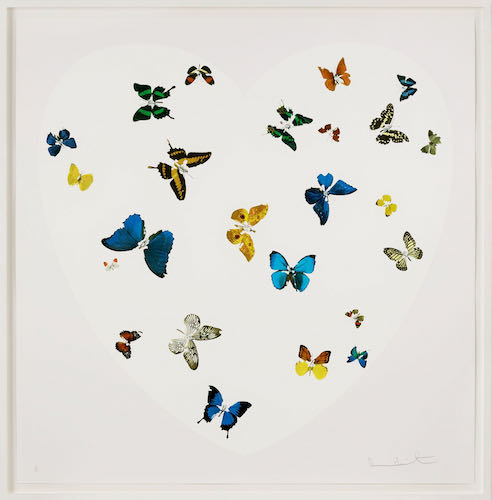
Damien Hirst, Love is All You Need, 2016
Hirst has used this symbol not only in his printed editions, but also in an exhibition at the Tate Modern, where visitors interactively immersed in a room of butterflies. Here the artist pushes the bound of viewer experience, by making each viewer become part of the artwork rather than simply a bystander. This concept follows Hirst’s theory that the best art is the kind that is both experienced and remembered. For the artist, the appeal of butterflies is created largely by the appearance of life they retain in death.
The “Wonder of You series”, featuring six prints of floating butterflies, explores the spiritual symbolism of the butterfly. The series features six polymer-gravure etchings with lithographic overlay, each nodding to a human feeling. The artist is using foil blocks to capture the same feeling of motion actual butterflies carry and the titles of his works are linked to different human emotions - as “Your Touch” and “Your Feel” to convey the symbolic message the butterfly carries. As the artist is known to have an obsession with death, his fascination with butterflies is linked to his view that stems from the idea that even when butterflies are dead, they do not loose their beauty and appear as being alive. And so, for the artist, the butterflies are the symbol of life and beauty.
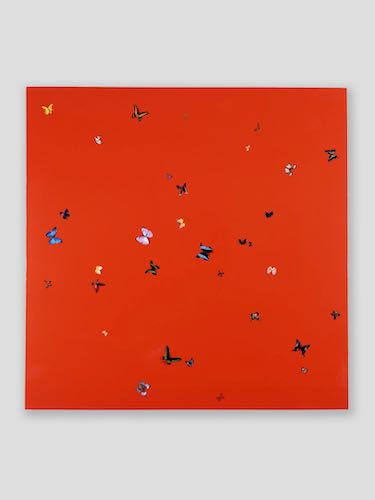
Damien Hirst, I love You, 1994-1995
Shortly after graduating, Hirst began work on a series of paintings inspired by seeing flies get stuck on primed canvases in his Brixton studio. Taking this idea but wanting to create something beautiful, Hirst started fixing the bodies of dead butterflies to monochrome gloss-painted canvases. The following year, he incorporated a number of similar works into In and Out of Love, (Butterfly Paintings and Ashtrays), 1991, part of his installation named “ In and Out of Love”, 1991.
These paintings are the earliest example of his use of the insects, which were to become one of his most recognisable motifs. On their repeated appearance in his work, the artist explains: “I think, rather than be personal, you have to find universal triggers: everyone’s frightened of glass, everyone’s frightened of sharks, everyone loves butterflies.”
“In and Out of Love (Butterfly Paintings and Ashtrays)” was the first exhibition of works from Hirst’s series of butterfly monochrome paintings. Following the show, a detail from one of the works was featured on the cover of the first edition of ‘Frieze’ magazine (July 1991). “In and Out of Love (Butterfly Paintings and Ashtrays)” was sold at the exhibition, whilst Hirst retained ownership of “In and Out of Love’ (White Paintings and Live Butterflies)”. The two works are united at Tate Modern’s Hirst retrospective for the first time since their exhibition at Woodstock Street.
